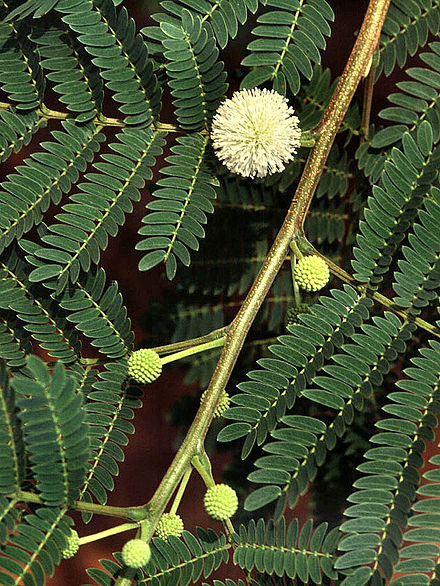Mimosoideae
The Mimosoideae are a traditional subfamily of trees, herbs, lianas, and shrubs in the pea family (Fabaceae) that mostly grow in tropical and subtropical climates. They are typically characterized by having radially symmetric flowers, with petals that are twice divided (valvate) in bud and with numerous showy, prominent stamens.
Recent work on phylogenetic relationships has found that the Mimosoideae form a clade nested with subfamily Caesalpinioideae and the most recent classification by The Legume Phylogeny Working Group refer to them as the Mimosoid clade within subfamily Caesalpinioideae. [1] The group includes about 40 genera and 2,500 species.
Some classification systems, for example the Cronquist system, treat the Fabaceae in a narrow sense, raising the Mimisoideae to the rank of family as Mimosaceae. The Angiosperm Phylogeny Group treats Fabaceae in the broad sense. The Mimosoideae were historically subdivided into four tribes (Acacieae, Ingeae, Mimoseae, and Mimozygantheae). However, modern molecular phylogenetics has shown that these groupings were artificial. Several informal subgroups have been proposed, but not yet described formally as tribes.[2][3][4][5][6][7] Additionally, the genus Acacia was recently segregated into five genera (Acacia sensu stricto, Acaciella, Mariosousa, Senegalia, and Vachellia).[8][9]
Modern molecular phylogenetics suggests the following relationships:[23][24][25][26][27][28][29][18]
Acacieae (Dumort., 1829[30]) is a wide-ranging, polyphyletic tribe of legumes in the Mimosoideae[31] that is native to the tropics, subtropics, and warm-temperate regions. It includes five or six genera and some 1,450 species.
In Bentham's 1842 circumscription of the subfamily Mimosoideae, Acacieae was one of its three constituent tribes, the others being Ingeae Benth. & Hook.f. and Mimoseae Bornn.[32] His Acacieae tribe of 1842 included many genera that were subsequently assigned to tribe Ingeae Benth. In 1875, however, Bentham narrowed his definition of Acacieae so as to include only Acacia Mill.[33]

